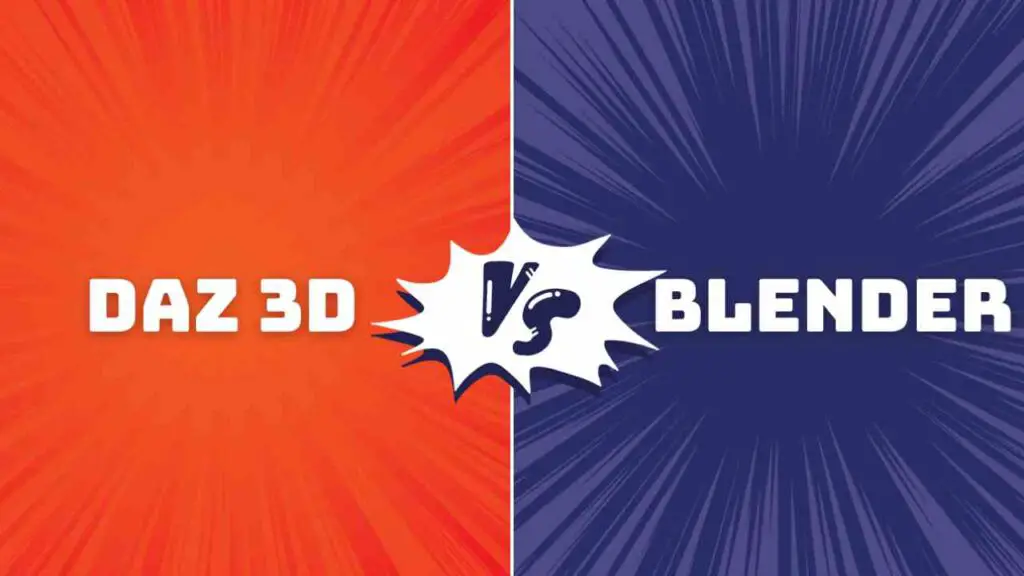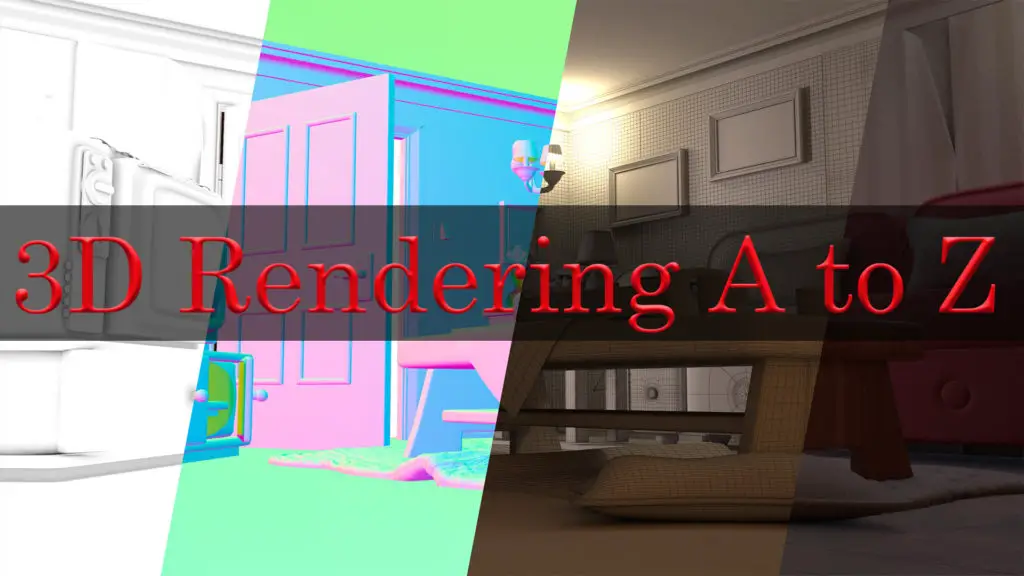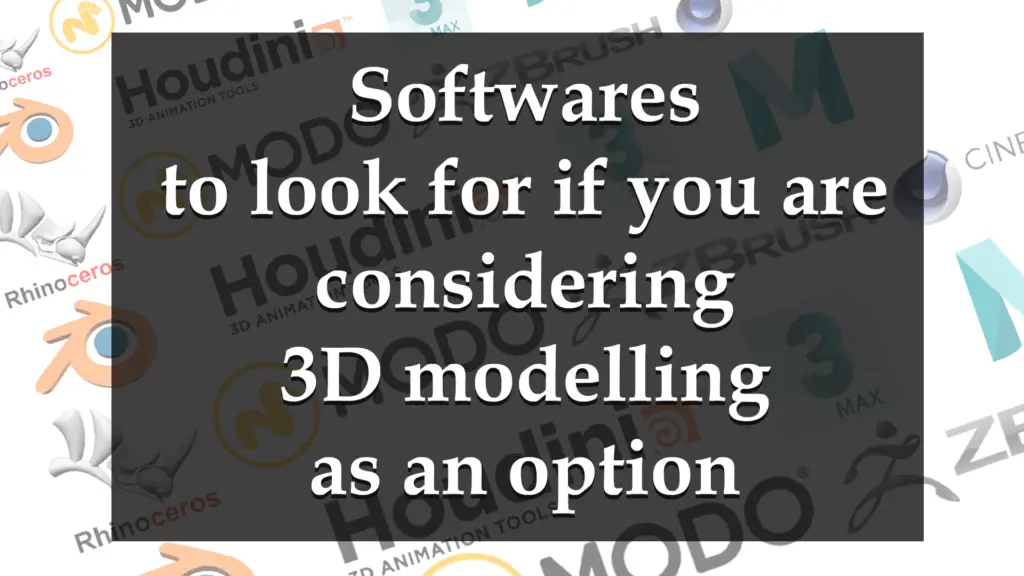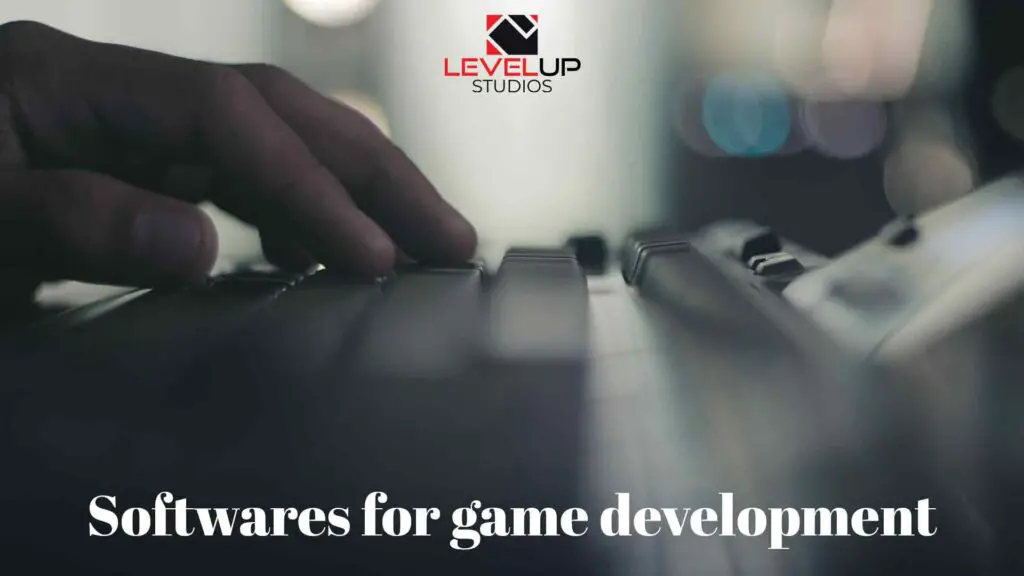THIS ARTICLE MAY CONTAIN AFFILIATE MARKETING LINKS! IN CASE YOU MAKE A PURCHASE THROUGH ONE OF THE LINKS, WE'LL GET A SMALL COMMISSION. WITH NO EXTRA CHARGES TO YOU. THANKS!!
Delving into the dynamic world of 3D modeling and animation, myriad software programs persist, each boasting unique features, capabilities, and user experiences. In the midst of this vast array, Daz 3D and Blender emerge as substantial contenders, inseparably linked by their shared objective to facilitate the creation of premium 3D content, yet starkly contrasted by the paths they tread to achieve this goal. This analysis seeks to illuminate these disparities, delving into the history, unusual features, functionality, user-friendliness, performance, and cost associated with each program, thus providing an informed comparison of these two influential tools in the realm of digital artistry. Let’s explore Daz 3D vs Blender
What is Daz 3D?
Daz 3D is a robust, feature-rich 3D content creation software platform. Developed by Daz Productions, the tool was initially released in the year 2005 under the name “Daz Studio”.
Daz 3D software navigates through a unique approach to 3D modeling, positing itself primarily as a figure-posing and animation software. Artists can select, alter, and arrange pre-made models within the program to create complex 3D scenes. It’s essentially a virtual dollhouse kit, offering elements that one can use to piece together a scene or character, instead of sculpting from scratch.
Unique Features of Daz 3D
The user interface of Daz 3D is straightforward and intuitive, with a selection of preset characters, clothing, and scene objects that users can drag and drop into a working area. Once the elements are placed in the scene, they can be manipulated and posed using a range of tools. The software comes with a plethora of morphs and textures, allowing users to customize characters or props with great detail.
One standout feature of Daz 3D is its inbuilt rendering engine – Iray. It’s an advanced ray tracer created by Nvidia, which helps to achieve photorealistic renders, complete with accurate lighting and reflections. With Iray, you can handle complex lighting conditions like caustics, subsurface scattering, and ambient occlusion without tinkering too much.
Rendering on Daz 3D
Rendering on Daz 3D leverages the power of your computer’s graphics processing unit (GPU), even multiple GPUs. Because of this GPU-focus, Daz 3D render times can be significantly reduced compared to other 3D software, depending on your hardware. However, it should be mentioned that Iray’s quality comes at a cost, as it can be demanding on hardware resources, especially for complex scenes.
The Daz 3D marketplace is another unique aspect of this platform. Artists can buy and sell Daz original content as well as user-generated stuff. From characters and clothing to other accessories, the marketplace offers a plethora of options for customizing your 3D imagery or animation.
Daz 3D in Action
Daz 3D’s ability to produce high-quality, realistic renders makes it a popular choice for illustrators, designers, and artists. Numerous examples can be found online of artworks that utilize Daz 3D’s posing, morphing, and rendering capabilities to great effect. In particular, book covers, character art, and scene illustrations are common applications for Daz 3D. These range from fantastical, otherworldly settings with strange, supernatural beings to hyper-realistic depictions of human characters and everyday environments. Whether you’re creating aliens for a sci-fi scene or a lifelike model of a historical figure, Daz 3D can provide the tools you need.
Daz 3D VS Blender: A Detailed Overview
When you compare Daz 3D with Blender, you’ll find that they serve different purposes in the 3D art realm. Daz 3D’s primary aim is to provide artists with modelled characters and props which can then be manipulated and posed as desired. In contrast, Blender offers a more extensive toolkit and process-oriented approach to creating 3D content. You can design and model characters or objects from scratch, animate them vividly, and eventually render your scene.
Financially, there’s a stark difference between the two. Blender is open-source software, completely free to use, and maintained by a global community of passionate developers. On the other side, Daz 3D’s software doesn’t cost anything, but to flesh out your creations, you’ll often have to buy additional models, outfits, and props. There is, however, a selection of complimentary items included with the software.
Moving to the rendering stage, both Blender and Daz 3D prioritize photorealism. Blender’s go-to engine is Cycles, a physically based, unbiased engine that can leverage both your CPU and GPU. Achieving similar effects as Daz 3D’s Iray engine, however, might be somewhat challenging since it requires you to have a deeper understanding of the Cycles engine. Iray is designed to be more straightforward, delivering instantaneous realism.
In conclusion, Daz 3D should be your choice if you prefer arranging pre-modelled characters and props in complex scenarios. However, if you’re someone who wants to have full control over every aspect of their 3D scene, including modeling, rigging, and animation, Blender would be a better fit for you.
Overview of Blender
Diving Deeper: A Closer Look at Blender
Blender is a robust, open-source 3D creation suite that supports every phase of 3D creation – modeling, rigging, animation, simulation, rendering, composting, and motion tracking. It was initially developed back in 1994 by Dutch animation studio, NeoGeo, to streamline their internal 3D creation process. Over the years, it has grown to become a favorite tool among game developers, animators, and visual effects artists thanks to its versatility.
Though the sheer amount of tools on offer in Blender can be daunting for anyone new to the platform, once you’ve mastered the learning curve, you’ll find the interface to be highly user-friendly and intuitive. With Blender, you also get a complete set of modeling tools, which adds to the software’s flexibility.
Blender caters to both basic and intricate animation projects. From inverse kinematics to a dozen deformers found in the modifier stack, the animation functionality is broad. Plus, Blender boasts an NLA Editor and a built-in compositor. This means you can fine-tune your rendered images without leaving the software.
On the rendering front, Blender offers the ability to switch between multiple rendering engines based on your project’s needs. Eevee, a real-time render engine, is bundled with Blender, geared more towards game development and interactive applications. For a more realistic effect, users can use the Cycles render engine.
Possessing a comprehensive toolset that serves all stages of a 3D artist’s workflow gives Blender a definite edge. It’s no wonder then that it has been the go-to software for many professional productions, like the feature film ‘Next Gen.’
Understanding Blender and Daz 3D
An insightful comparison between two powerful 3D tools, Blender and Daz 3D, helps determine both their unique value propositions and the circumstances where they shine the brightest. Daz 3D prides itself on an extensive library, overflowing with pre-crafted 3D figures, textures, accessories, and scenes, acting as a robust foundation for rapid art or animation composition.
Unlike its counterpart, Daz 3D isn’t necessarily recognized for its modeling prowess, but rather its strength lies in the transformation, positioning, and rendering of pre-made assets. This unique facet makes it a magnet for beginners trails blazing their way into the world of 3D, whetting a keen interest in mastering skills like sculpting, lighting, and rendering than committing to intricate 3D modeling tasks.
Standing on the opposite end of the spectrum, Blender arises as an instrument geared towards the creation and adjustment of innovative 3D content, trumping with top-tier modeling tools that grant artist’s unmatched control and plasticity over their undertakings. Aspiring individuals seeking to advance their expertise in 3D sculpting, animation, or video game design will find Blender’s extensive, feature-dense platform irresistibly appealing.
In essence, Blender emerges as a holistic, multi-faceted suite fit for the complete 3D pipeline, whereas Daz 3D remains a simplified platform emphasizing on repositioning, transforming, and rendering pre-fabricated models. Regardless of their differences, both offer valuable uses dictated by the artist’s objectives and project stipulations.
Ease of Use: Daz 3D vs Blender
User Experience: Daz 3D
From the outset, Daz 3D flaunts a beginner-friendly interface, stocked with pre-installed models and presets that serve as an essential stepping-stone for novice users. A well-curated asset library further manifests, facilitating a seamless importation process and asset organization, a step-up towards a simplified 3D setup venture. This software notably excels in character modeling, providing an immersive experience in fine-tuning subtle facial features and body forms.
Alongside a user-centric design, Daz 3D boasts an extensive online support network complete with an extensive knowledge repository, instructional guides, and an active discussion forum. A surrounding community enriched with industry veterans and hobbyists readily share their wisdom and punctually respond to inquiries, a kindness that greatly lowers the haunting, steep learning curve associated with such advanced software.
Ease of Use: Blender
On the other hand, despite Blender’s potent capabilities in the 3D rendering arena, the interface tends to be rather dense for beginners. Many functionalities are hidden behind hotkeys and contextual menus which can be confusing for first-time users. However, once these initial hurdles are overcome, users can manipulate its advanced features and tools to generate highly complex 3D art and animations.
Blender boasts a thriving community, fervently active and habitually altruistic, with a wealth of experience in 3D modeling, animation, and more. It is accompanied by a robust library of tutorials, guides, and resources, delivered by vociferous educators willing to share their expertise to streamline the learning path. Notably, one can access Blender Guru, a renowned online platform assisting countless users in understanding and more skillfully utilizing the software.
Daz 3D and Blender: A Comparative Look
Daz 3D and Blender are two of the leading 3D modelling and rendering software in the market, each favored by different types of users. Recognized for its user-friendly approach, Daz 3D charms beginners with its uncomplicated drag-and-drop mechanic and intuitive interface. This allows novices to easily create and render 3D characters in no time. Contrastingly, Blender, equipped with a comprehensive toolkit and complex command matrix, can be daunting for beginners. However, overcoming its steep learning curve opens doors to a robust and flexible platform with professional-grade capabilities.
As for learning resources, both platforms have a wealth of tutorials, guides, and supportive user communities. Although Daz 3D has decent resources, Blender seems to take the lead in this aspect with a plethora of free resources and training available, making it easier for users to familiarize themselves with the software.
Choosing between Daz 3D and Blender ultimately depends on the user’s experience level and the specific application. Daz 3D is excellent for those wanting a quick introduction to 3D modelling, especially character creation, whereas Blender is better suited for those willing to invest time to master complex tools, thereby expanding their horizon of 3D artistry and production tasks.
Performance Comparison: Daz 3D vs Blender
Assessing Rendering Speed and Quality: Daz 3D Versus Blender
In terms of rendering speed and output quality, both Daz 3D and Blender showcase their respective strengths. Notably known for its quick and high-quality renderings, Daz 3D utilizes both CPU and GPU rendering resources of your computer. This, coupled with its vast library of pre-rendered assets, contributes to faster project completions.
Conversely, Blender is renowned for its potent Cycles render engine that generates near-photorealistic outputs. However, the intricate workings of Cycles as a path tracer can slow down rendering, making complex scenes with numerous lights and shaders more time-consuming to process than in Daz 3D. Despite the extended rendering time, the end results in Blender, showcasing realistic lighting and materials, are often worth the extra wait.
Realism: Daz 3D vs Blender
With regards to realism, Daz 3D is known for its hyper-realistic human models and animations. Its genesis figures, which are highly customizable, give creators the ability to fine-tune every aspect of the human form, from muscle tension to skin texture. This level of customization opens endless opportunities for creating realistic human figures.
In contrast, while Blender is capable of creating realistic models, it doesn’t offer the same level of detail right out of the box. Realistic human modeling in Blender involves a steep learning curve and a lot of manual work. However, with the freedom to adjust any parameter, experienced users can achieve astonishing levels of realism.
Animation Capabilities: Daz 3D vs Blender
Daz 3D provides a user-friendly interface for animation, especially for beginners. With a drag-and-drop environment and a vast library of premade animations, budding animators can create professionally-looking scenes without having to animate every single frame from scratch.
Blender offers comprehensive animation tools which can be more complex to learn but provide greater flexibility and control. For those seeking to animate intricate scenes with granular detail, Blender is an excellent choice. With tools for rigging, skinning, and inverse kinematics, among others, Blender gives its users complete control over their animations.
The Industry Relevance of Daz 3D and Blender
Daz 3D is frequently used in industries that demand high-quality premade human models, such as in film, advertising, and game development. The software is highly regarded for its expansive library of assets and ease of use, making it an essential tool for achieving projects rapidly and efficiently.
On the other hand, the open-source software Blender proves its worth with its versatile and robust toolset that’s perennially updated by a global community of developers. Blender finds its applications in a plethora of sectors such as game development, film animatics, visual effects, and product design. As an open-source software, it constantly evolves, becoming more adaptable to the varying needs of different industries over time.
Pricing: Daz 3D vs Blender
The Cost Structure of Daz 3D
Daz 3D provides users with the option to download and use the basic software free of charge. However, accessing its entire range of tools and features comes at a cost. It employs an à la carte pricing model, offering a diverse catalogue of models, textures, and other detailed elements that can be purchased individually. The prices of these assets span from just a few dollars to several hundred, varying based on their complexity and detail. Further, users have the choice to join the Daz 3D’s Platinum Club+, which offers exclusive discounts and complimentary new products every week for a subscription fee.
Alongside, Daz 3D provides Daz Studio, a comprehensive tool for 3D figure posing and animation. Although the base software is free, users have the liberty to buy additional features that enhance its utility. This assortment of add-ons includes new figures and props, as well as advanced rendering capabilities. The cost of these add-ons can greatly differ, with some available for under $20 and others exceeding $100.
Blender’s Open-Source Advantage
By contrast, Blender is an open-source 3D creation suite, meaning that it’s completely free to download and use. Being open-source, it allows anyone in the world to tweak its code, making Blender not only a cost-effective choice but one that highly values community contribution and collective improvement. The functionalities comparable to Daz 3D’s paid add-ons are available in Blender at no extra cost. This includes high quality rendering, modeling, sculpting, animation, simulation, compositio, motion tracking, video editing, and 2D animation pipeline.
While there’s no official marketplace or base assets to purchase within Blender, many vibrant third-party markets and communities exist where users can buy and sell assets such as models, materials, and textures. Additionally, a plethora of free resources and tutorials are available online that can aid newcomers in navigating the admittedly steep learning curve. This means the cost associated with Blender become more about the time and effort invested in learning its complex interface and making use of its extensive tools.
Comparison of Cost Effectiveness
When comparing the cost-effectiveness of Daz 3D and Blender, one must consider not only the initial cost of the software and its resources, but also the long-term financial implications. While Daz 3D’s paid assets and subscriptions can provide a fast and easy way to create high quality, detailed scenes, these costs can add up over time. The convenience factor is one of the key selling points of using Daz 3D over Blender.
On the other hand, while Blender’s initial learning curve may seem daunting, its free open-source nature allows users to have high-end functionalities and produce professional-level work without spending a penny. This makes Blender a highly cost-effective choice in the long run, that facilitates creative freedom without straining the wallet.
Therefore, the choice between Daz 3D and Blender often depends on a balance of your budget, your willingness to learn, and how quickly you need to create your 3D content.
While each software has its merits and demerits, the choice between Blender and Daz 3D heavily relies on individual requirements, budget, and level of expertise. Both applications hold distinguished positions in their spheres of influence, continuously shaping the landscape of 3D modeling, rendering and animation. In the final analysis, it is evident that the importance of user preference and project demands in guiding the selection between these two formidable tools, cannot be overstated. Therefore, the sustained relevance of both Blender and Daz 3D in the industry testifies to their respective strengths and versatility in the fast-paced, ever-evolving world of digital art.







